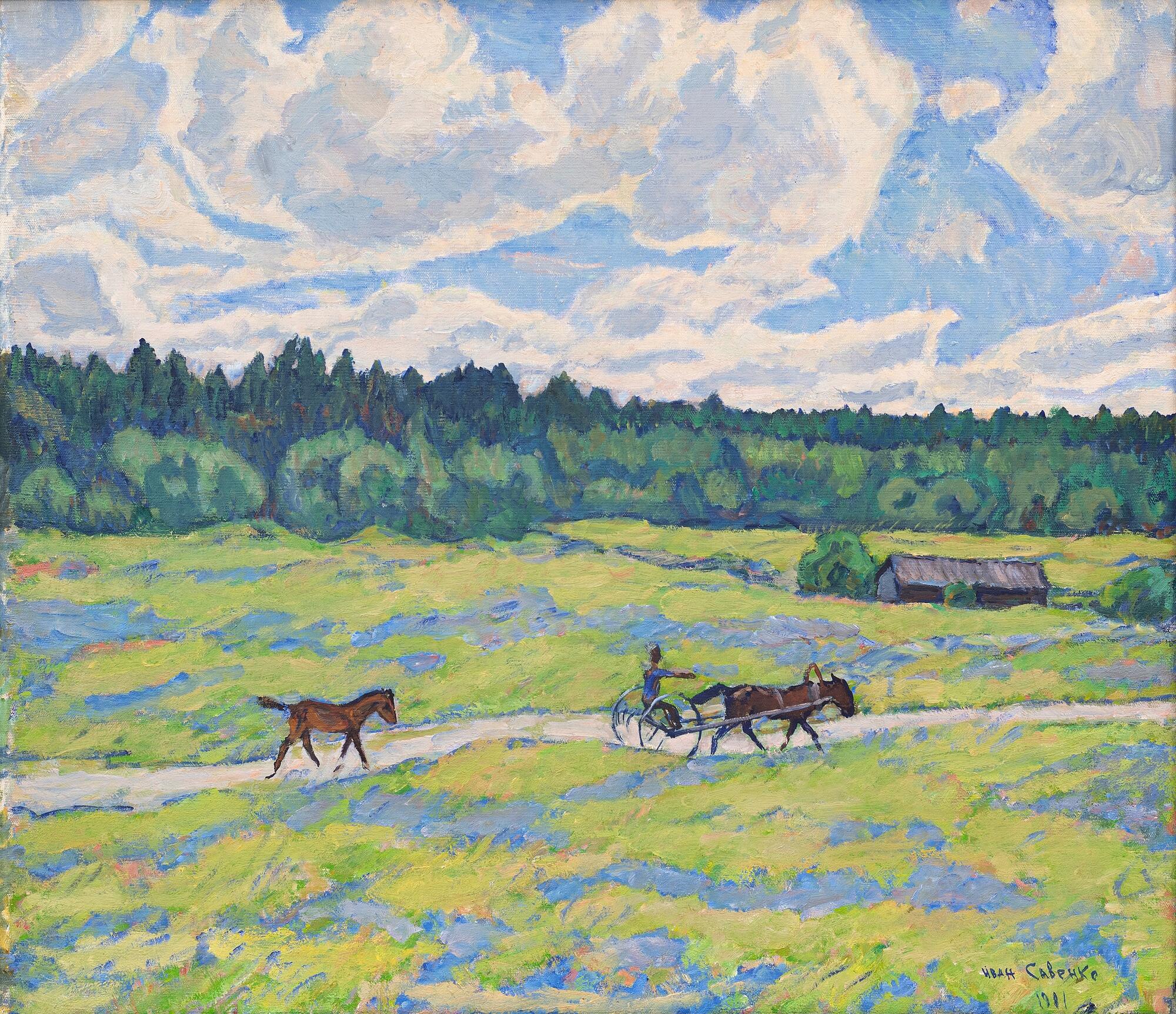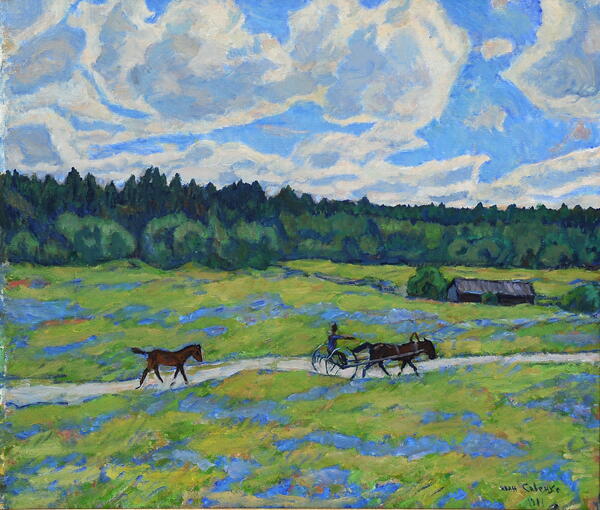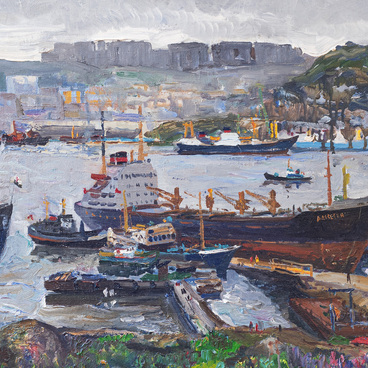The landscape painter Ivan Grigorievich Savenko has been an Honored Artist of the RSFSR since 1975.
He was born on January 17, 1924 in Ukraine.
Meeting the art historian Nikolai Nikolaevich Serebrennikov was an important event that shaped Ivan Savenko’s life. Serebrennikov worked at the museum, gathered the main collections of the Perm Art Gallery, and studied the history of art of the Kama region and the Urals. He was the one to advise Ivan to continue his artistic education and devote his life to art. Ivan Grigorievich was about to follow the advice, but the war thwarted his plans.
On June 22, 1941, Ivan Savenko was in the rear in the Urals. During the Great Patriotic War, he participated in restoring the defense plants that had been evacuated to the Urals. As early as in 1942, he was drafted into the army and received intensive training at a tank school. After he had completed the course, he was enlisted in the 19th Guards Mechanized Brigade. On October 26, 1943, he was shell-shocked and seriously wounded in a tank battle against superior enemy forces near Kakhovka.
He spent a lot of time at a military hospital in Saratov. The military medical commission claimed that he was no longer fit for military service. Savenko received a disability certificate and was discharged. He was awarded an Order of Glory 3rd class and a medal “For the Victory over Germany”.
In 1950, he graduated with honors from the Kyiv Art Institute, the class of the Soviet Ukrainian teacher and artist, landscape and portrait painter Grigory Petrovich Svetlitsky. From 1950 to 1954, Savenko was a postgraduate student of Alexander Mikhailovich Gerasimov at the Leningrad Institute of Painting, Sculpture and Architecture named after Ilya Repin.
Ivan Savenko’s paintings and sketches are distinguished by finely selected color combinations and nuances. His pictures are full of imagery — these are joyful, highly artistic works.
The painting “Hay-time” is full of air movement: the clouds and the meadow —everything moves under a strong wind. In the center of the work are the figures of a man and horses, rendered with dynamic brush strokes. The figures move in the direction of the wind — as if the traveler were trying to get home before it starts pouring down.
He was born on January 17, 1924 in Ukraine.
Meeting the art historian Nikolai Nikolaevich Serebrennikov was an important event that shaped Ivan Savenko’s life. Serebrennikov worked at the museum, gathered the main collections of the Perm Art Gallery, and studied the history of art of the Kama region and the Urals. He was the one to advise Ivan to continue his artistic education and devote his life to art. Ivan Grigorievich was about to follow the advice, but the war thwarted his plans.
On June 22, 1941, Ivan Savenko was in the rear in the Urals. During the Great Patriotic War, he participated in restoring the defense plants that had been evacuated to the Urals. As early as in 1942, he was drafted into the army and received intensive training at a tank school. After he had completed the course, he was enlisted in the 19th Guards Mechanized Brigade. On October 26, 1943, he was shell-shocked and seriously wounded in a tank battle against superior enemy forces near Kakhovka.
He spent a lot of time at a military hospital in Saratov. The military medical commission claimed that he was no longer fit for military service. Savenko received a disability certificate and was discharged. He was awarded an Order of Glory 3rd class and a medal “For the Victory over Germany”.
In 1950, he graduated with honors from the Kyiv Art Institute, the class of the Soviet Ukrainian teacher and artist, landscape and portrait painter Grigory Petrovich Svetlitsky. From 1950 to 1954, Savenko was a postgraduate student of Alexander Mikhailovich Gerasimov at the Leningrad Institute of Painting, Sculpture and Architecture named after Ilya Repin.
Ivan Savenko’s paintings and sketches are distinguished by finely selected color combinations and nuances. His pictures are full of imagery — these are joyful, highly artistic works.
The painting “Hay-time” is full of air movement: the clouds and the meadow —everything moves under a strong wind. In the center of the work are the figures of a man and horses, rendered with dynamic brush strokes. The figures move in the direction of the wind — as if the traveler were trying to get home before it starts pouring down.



